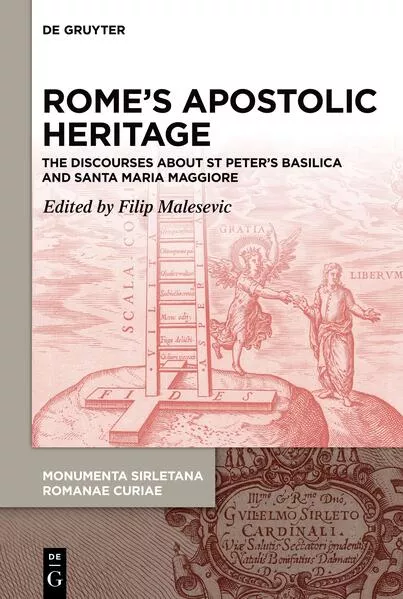Guglielmo Sirleto: Monumenta Sirletana Romanae Curiae. Operae
Chronologie aller Bände (1 - 1)

Die Reihenfolge beginnt mit dem Buch "Guglielmo Sirleto: Monumenta Sirletana Romanae Curiae. Operae / Rome’s Apostolic Heritage". Wer alle Bücher der Reihe nach lesen möchte, sollte mit diesem Band von Filip Malesevic beginnen. Die Reihe endet vorerst mit diese Titel.
Der zweite Teil der Reihe "Guglielmo Sirleto: Monumenta Sirletana Romanae Curiae. Operae / Rome’s Apostolic Heritage" ist am 14.10.2023 erschienen.
- Anzahl der Bewertungen für die gesamte Reihe: 0
- Ø Bewertung der Reihe: 0
- Autor: Malesevic, Filip
- Anzahl Bewertungen: 0
- Ø Bewertung:
- Medium: Buch
- Veröffentlicht: 14.10.2023
- Genre: Roman
Guglielmo Sirleto: Monumenta Sirletana Romanae Curiae. Operae / Rome’s Apostolic Heritage
Guglielmo Sirleto has generally been acknowledged as a crucial contributor to defending the papacy’s claims over St Peter’s primacy, including the apostle’s legendary arrival to Rome before his martyrdom. Sirleto established himself as a pivotal prelate, who assisted Pope Paul IV in rearranging the ceremonial apparatus for the solemn celebrations of the Cathedra Petri (St Peter’s Throne).
Scholars, however, were unable to properly examine his De praestantia basilicae Vaticanae, because the manuscripts of this discourse were never completely identified. The edition of this treatise will therefore primarily provide a reconstruction of Sirleto’s working methods in readjusting the ceremonial solemnities prescribed for the feast day of the Cathedra Petri according to Curial Ceremony.
The second discourse concerns, on the other hand, a description of the basilica of Santa Maria Maggiore on the Esquiline Hill, which Sirleto composed for the Cardinal Bishop of Milan, Carlo Borromeo. In contrast to the edition of the first discourse in this volume, the Trattato sopra la chiesa di Santa Maria Maggiore is presented according to the correspondence between Borromeo and Sirleto.
